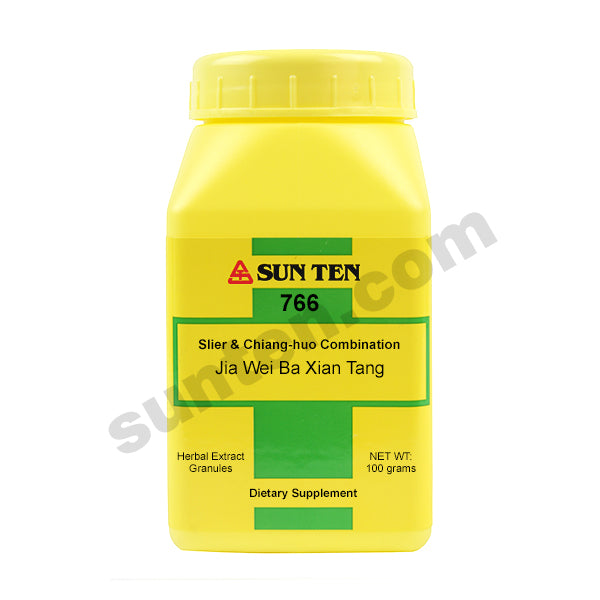Jia Wei Ba Xian Tang
Slier & Chiang-huo Combination Granules | 加味八仙湯
Practitioners: Please LOGIN to view the wholesale price. This item can only be purchased by a licensed practitioner. Find a practitioner
Ingredients: Tang-kuei root (dang gui), White peony root (bai shao), Cnidium root (chuan xiong), Cooked rehmannia root (shu di huang), Oriental ginseng root, Atractylodes root (bai zhu), Hoelen fungus (hu ling), Citrus peel (chen pi), Pinellia root (ban xia), Chinese licorice root (gan cao), Fang-feng root (fang feng), Notopterygium root (qiang huo), Achyranthes root (niu xi), Large-leaved gentiana root (qin jiao), Ginger root, Cinnamon twig (gui zhi), Bupleurum root (chai hu), Jujube fruit (da zao).
| Mandarin: 加味八仙湯 Pin-Yin: Jia Wei Ba Xian Tang English: Slier & Chiang-huo Root Combination Romaji: Kami Hachisen To Kanji: 加味八仙湯 Kampo: No |

